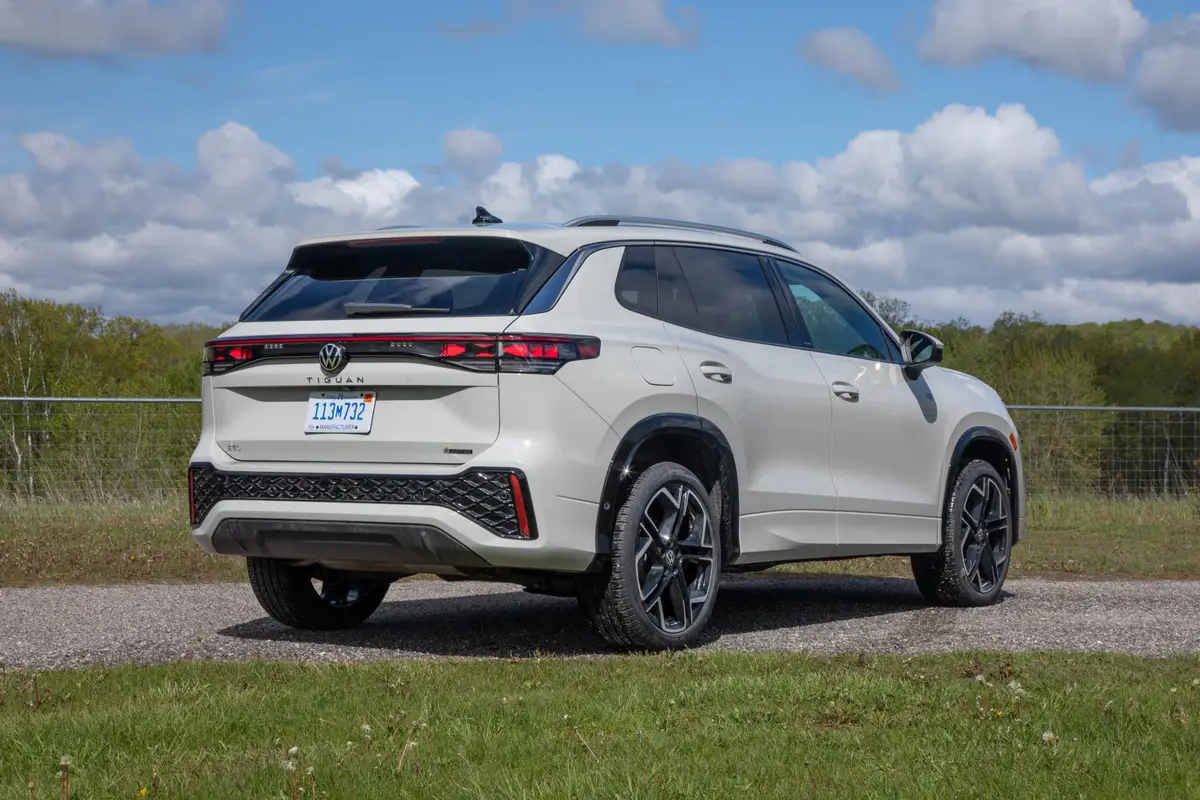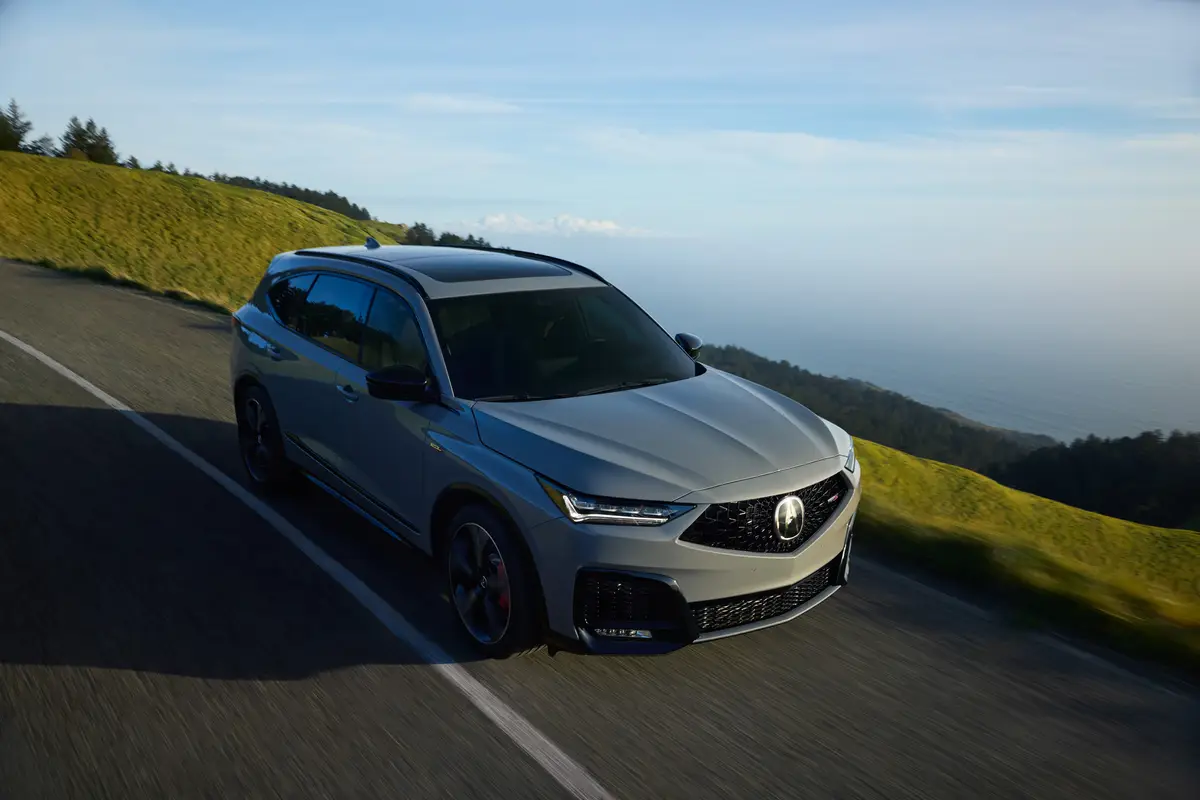The Morning Call and Mcall.com's view
Four-wheel-drive passenger cars may not be the wave of the future but they certainly are making a couple of splashes.
This whole concept is still relatively new and not really a big threat to two-wheel drive cars. However it is interesting that each year another manufacturer or two offers this type of vehicle.
The most sophisticated and most luxurious of this type of car no doubt is the Audi 5000S Quattro, a German sports sedan aimed at the upper end of the market. It certainly isn’t a car for everybody, but those who can afford it and those who can appreciate it should have a couple of things to say when the conversation turns to automobiles.
Audi is the pioneer of the four-wheel-drive sports sedan – but by no means the pioneer of the four-wheel-drive passenger car – and over the past couple of years it certainly must have learned something. The test car – supplied by Knopf Automotive, 3401 Lehigh St., Allentown – was so smooth, so subtle, that I doubt very much if anyone driving it could detect it was a four-wheel-drive car without being told.
To all of this, someone could very well say, ”So what?” This, of course, brings up the question of whether or not four-wheel-drive – and in particular constant four-wheel-drive – in a vehicle designed to run the highways is really necessary? Well, right up front I would say that is up to the individual buyer to decide. But let’s go over a couple of points and claimed advantages of this drive configuration.
The big advantage and the one most people think of when it comes to 4WD is traction. Sometimes a little extra traction will help on snow-covered roads, loose surfaces or wet and oily concrete highways. Even on dry roads, Audi claims, the handling of a high-performance car with just one driven axle can be too much for the driver to manage because of physical limits that apply when just two tires try to cope with acceleration and cornering at thesame time. Four-wheel drive distributes the tractive forces among all four tires and places lower demands on each one. So, ultimate cornering ability is higher than with conventional drive layouts. This is what Audi claims and it is a pretty sound argument providing the right type of four-wheel drive is used.
Audi uses a permanently engaged four-wheel drive that, obviously, frees the driver from deciding upon and reacting to rapidly changing road conditions. The extra traction is always there. By using such a system, Audi also claims it can sharpen up its suspension for better handling since it only had to worry about driving in one mode.
This system, of course, would be great in snow. The test car didn’t see any snow but it saw a lot of rain and wet roads. No problem at any time. Before you get the idea that the driver just sits in the Quattro without a care in his or her head, it should be pointed out that when the going gets extremely rough, there are a couple of decisions that can be made.
Although the Quattro has a permanently engaged four-wheel drive system, it is possible to lock one or two of the three differentials. For example, when more traction is needed, as in starting on very slippery surfaces like snow and ice, or on a steep wet grade, the center differential can be locked which in turn will synchronize the rotation of the front wheels to that of the rear wheels. Under very extreme conditions – possibly getting stuck in sand or mud – the rear differential also can be locked. With the two differentials locked, the Quattro only can get stuck if three wheels lose traction. The differential locking switch is located in the center of the dash, just in front of the shift lever, and it only takes a slight twist to activate.
In keeping with this let’s be prepared for the most dire situation. The Quattro is also equipped with an anti-lock brake system (ABS), another fairly recent development that I ca ‘t praise enough (no matter what car is equipped with this system). With such a system, an average driver can bring a car to a stop as quickly and safely as an experienced professional driver.
This is made possible (as the name implies) by not allowing any wheel to lock. In a panic stop situation, most people tend to stand on the brakes. This can not only result in an increase in stopping distance, it also can cause the car to lose steering control. Pumping the brakes can prevent the wheels from locking and sliding. However, you do need some room to pump brakes. With ABS, a driver can still stand on the brake pedal but the system – through a series of wheel speed sensors, electronic control unit and hydraulic control unit – will pump the brakes faster than any human could, thus maintaining control.
So, ABS will maximize directional stability (helps prevent skidding caused by wheel-locking); returns steering control to the driver in emergency conditions, and provides shorter stopping distances than a driver could normally achieve in maximum braking even on dry pavements. Just because a car is equipped with ABS, it doesn’t mean you can travel at any speed. A driver still has to adjust the speed to road and weather conditions.
The 5000S Quattro is powered by Audi’s venerable five-cylinder engine, a somewhat odd engine design but one that seems to suit the Quattro perfectly. The engine measures 2.3-liter/141-cubic-inches and is rated at 130 horsepower at 5,600 rpm and 140 foot pounds torque at 4,000 rpm. This may not sound like a tremendous amount of power for a car weighing in at 3,305 pounds, but it certainly gets the job done. The test car proved to be quick under all conditions. Zero-to-60 can be had in less than 10 seconds and it just rolls and rolls right along the highway. Audi claims a top speed of 125 mph.
(This engine only has been offered in the Quattro since this summer. Previously, the 5000 Quattro was available with the turbocharged version.)
Helping to make use of everyone of the Quattro’s 130 horses is a five- speed manual transmission that appears to be perfectly geared to it. The transmission is easy to use (for those who can operate a manual, of course) and it just seems to have the right gear for every situation. The engine/ transmission combination also provided decent fuel mileage. The test car averaged 16 miles per gallon for city driving and 23 mpg over the highway. Unleaded premium was used.
Now let’s talk about the 5000’s good looks. This design is now several years old but looks as fresh as anything on the road. It was one of the first real aerodynamic designs. One would naturally assume that the four-wheel drive version of this car would be slightly less aerodynamic. Not so. It measures the same 0.32 coefficient of drag. Quite an achievement. What you can’t see about this body is also interesting. It is the only production sedan t hat uses panels of fully electrogalvanized sheet steel.
The 5000S Quattro is a mid-sized car that can hold five passengers in comfort. Both front and back seat leg room is very good. And the trunk measures 17 cubic feet.
If by now you think is car is expensive, you’re right. The base price is $24,450 and this includes a long list of standard equipment. Full price on the test car, including a destination charge of $335, came to $26,355. The car’s three options are: power tilt and slid sunroof, $1,055; electronically tuned cassette/radio, $420, and expandable ski/ storage sack, $95. The car is covered by a three-year or 50,000 mile limited vehicle warranty. There is also a free Roadside Assistance Program and a six-year corrosion perforation warranty.
Latest news



